Related Research Articles

The history of Islam concerns the political, social, economic, military, and cultural developments of the Islamic civilization. Most historians believe that Islam originated in Mecca and Medina at the start of the 7th century CE. Muslims regard Islam as a return to the original faith of the Abrahamic prophets, such as Adam, Noah, Abraham, Moses, David, Solomon, and Jesus, with the submission (Islām) to the will of God.

Khwarazm or Chorasmia is a large oasis region on the Amu Darya river delta in western Central Asia, bordered on the north by the (former) Aral Sea, on the east by the Kyzylkum Desert, on the south by the Karakum Desert, and on the west by the Ustyurt Plateau. It was the center of the Iranian Khwarezmian civilization, and a series of kingdoms such as the Afrighid dynasty and the Anushtegin dynasty, whose capitals were Kath, Gurganj and – from the 16th century on – Khiva. Today Khwarazm belongs partly to Uzbekistan and partly to Turkmenistan.

The Buyid dynasty, also spelled Buwayhid, was a Shia Iranian dynasty of Daylamite origin, which mainly ruled over Iraq and central and southern Iran from 934 to 1062. Coupled with the rise of other Iranian dynasties in the region, the approximate century of Buyid rule represents the period in Iranian history sometimes called the 'Iranian Intermezzo' since, after the Muslim conquest of Persia, it was an interlude between the rule of the Abbasid Caliphate and the Seljuk Empire.
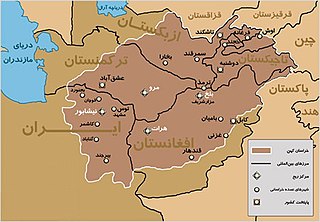
Greater Khorāsān, or Khorāsān, is a historical eastern region in the Iranian Plateau between Western and Central Asia. The name Khorāsān is Persian and means "where the sun arrives from" or "the Eastern Province". The name was first given to the eastern province of Persia during the Sasanian Empire and was used from the late Middle Ages in distinction to neighbouring Transoxiana. Greater Khorasan is today sometimes used to distinguish the larger historical region from the former Khorasan Province of Iran (1906–2004), which roughly encompassed the western half of the historical Greater Khorasan.
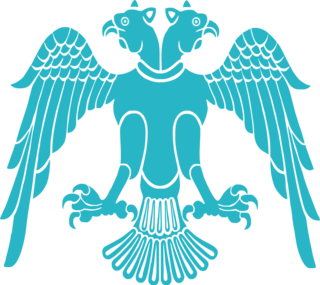
The Seljuk dynasty, or Seljukids, also known as Seljuk Turks, Seljuk Turkomans or the Saljuqids, was a Turkoman Sunni Muslim dynasty that gradually became Persianate and contributed to the Turco-Persian tradition in the medieval Middle East and Central Asia. The Seljuks established both the Seljuk Empire (1037-1194), the Sultanate of Kermân (1041-1186) and the Sultanate of Rum (1074-1308), which at their heights stretched from Iran to Anatolia, and were targets of the First Crusade.

Chaghaniyan, known as al-Saghaniyan in Arabic sources, was a medieval region and principality located on the right bank of the Oxus River, to the south of Samarkand.
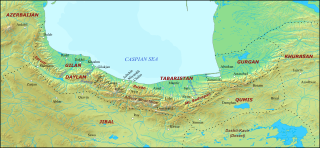
Tabaristan or Tabarestan, was the name applied to a mountainous region located on the Caspian coast of northern Iran. It corresponded to the present-day province of Mazandaran, which became the predominant name of the area from the 11th-century onwards.

The Great Seljuk Empire, or the Seljuk Empire was a high medieval, culturally Turko-Persian, Sunni Muslim empire, founded and ruled by the Qiniq branch of Oghuz Turks. It spanned a total area of 3.9 million square kilometres from Anatolia and the Levant in the west to the Hindu Kush in the east, and from Central Asia in the north to the Persian Gulf in the south.

Shirvanshah, also spelled as Shīrwān Shāh or Sharwān Shāh, was the title of the rulers of Shirvan from the mid-9th century to the early 16th century. The title remained in a single family, the Yazidids, an originally Arab but speedily Persianized dynasty, although the later Shirvanshahs are also known as the Kasranids or Kaqanids. The Shirvanshah established a native state in Shirvan.

Guzgan was a historical region and early medieval principality in what is now northern Afghanistan.
The term Iranian Intermezzo, or Persian Renaissance, represents a period in history which saw the rise of various native Iranian Muslim dynasties in the Iranian Plateau after the 7th-century Muslim conquest of Iran and the fall of Sasanian Empire. The term is noteworthy since it was an interlude between the decline of Abbāsid rule and power by Arabs and the "Sunni Revival" with the 11th-century emergence of the Seljuq Turks. The Iranian revival consisted of Iranian support based on Iranian territory and most significantly a revived Iranian national spirit and culture in an Islamic form. The Iranian dynasties and entities which comprise the Iranian Intermezzo are the Tahirids, Saffarids, Sajids, Samanids, Ziyarids, Buyids and Sallarids.
The Daylamites or Dailamites were an Iranian people inhabiting the Daylam—the mountainous regions of northern Iran on the southwest coast of the Caspian Sea, now comprising the southeastern half of Gilan Province.
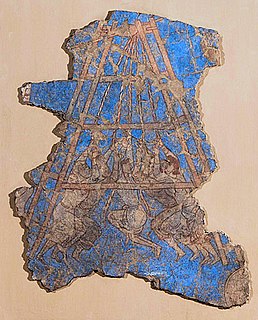
The Muslim conquest of Transoxiana or Arab conquest of Transoxiana were the 7th and 8th century conquests, by Umayyad and Abbasid Arabs, of Transoxiana, the land between the Oxus and Jaxartes rivers, a part of Central Asia that today includes all or parts of Uzbekistan, Tajikistan, Kazakhstan, and Kyrgyzstan.

Transoxiana or Transoxania is the Latin name for a region and civilization located in lower Central Asia roughly corresponding to modern-day Eastern Uzbekistan, Western Tajikistan, parts of Southern Kazakhstan, parts of Turkmenistan and Southern Kyrgyzstan. Geographically, it is the region between the rivers Amu Darya to its south and the Syr Darya to its north.
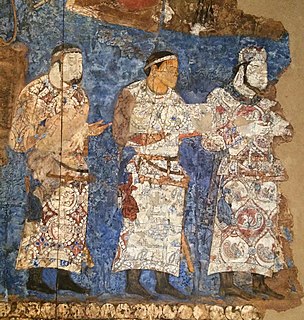
The Principality of Chaghaniyan, known in Arabic sources as al-Saghaniyan, was a part of the Hephthalite Confederation from the 5th to the 7th century CE. After this, it was ruled by a local, presumably Iranian dynasty, which governed the Chaghaniyan region from the late 7th-century to the early 8th-century CE. These rulers were known by their titles of “Chaghan Khudah”.

The Principality of Khuttal,, was a local Iranian dynasty, which ruled the Khuttal region from the early 7th century to 750. The rulers of the region were known by their titles of “Khuttalan Shah”, “Khuttalan Khudah”, and “Shir-i Khutallan”. The capital and residence of the rulers was in Hulbuk, close to the city of Kulob.

The Principality of Ushrusana was a local dynasty ruling the Ushrusana region, in the northern area of modern Tajikistan, from an unknown date to 892 CE. Ushrusana, just like Ferghana, did not belong to Sogdia proper, but its inhabitants wrote in Sogdian, and may have spoken the Sogdian language as well. The rulers of the principality were known by their title of Afshin.
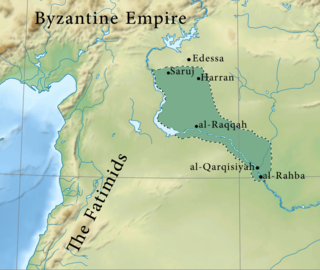
The Numayrids were an Arab dynasty based in Diyar Mudar. They were emirs (princes) of their namesake tribe, the Banu Numayr. The senior branch of the dynasty, founded by Waththab ibn Sabiq in 990, ruled the Euphrates cities of Harran, Saruj and Raqqa more or less continuously until the late 11th century. In the early part of Waththab's reign, the Numayrids also controlled Edessa until the Byzantines conquered it in the early 1030s. In 1062, the Numayrids lost Raqqa to their distant kinsmen and erstwhile allies, the Mirdasids, while by 1081, their capital Harran and nearby Saruj were conquered by the Turkish Seljuks and their Arab Uqaylid allies. Numayrid emirs continued to hold isolated fortresses in Upper Mesopotamia, such as Qal'at an-Najm and Sinn Ibn Utayr near Samosata until the early 12th century, but nothing is heard of them after 1120.

The Kerman Seljuk Sultanate was a Turko-Persian Sunni Muslim state, established in the parts of Kerman and Makran which had been conquered from the Buyid dynasty by the Seljuk Empire which was established by Seljuk Turks. The Founder of this dynasty, Emadeddin Kara Arslan Ahmad Qavurt who succeeded the ruler of this dynasty after the surrender of the ruler of Buyyids, Abu Kalijar Marzuban. For first time in this period, an independent state was formed in Kerman; eventually, after 150 years, with the invasion of the Ghuzz leader's Malik Dinar, the Kerman Seljuk Sultanate fall.